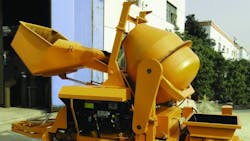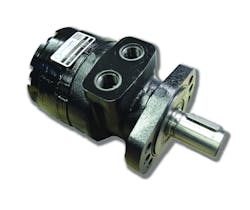Low-Speed, High-Torque Motor has Wealth of Features
âGeroler-type hydraulic motors have a great reputation for delivering low-speed, high-torque power. Their compact design also makes them the first or only choice when space is tight — especially because they drive loads directly without needing a speed-reducing gearbox.
However, some designs of geroler motors exhibit internal leakage that prevents them from starting loads effectively from rest. The internal leakage allows fluid to bypass pressure chambers and some of it flow through the motor’s case drain. The result of this bypass is reduced starting torque.
âFluidyne Fluid Power, Fraser, Mich., resolves this issue with its new heavy duty 500-Series Motors. The 500-Series motors are available in 11 nominal displacements from 125 to 750 in.3/rev. (7.20 to 45.45 cc/rev.). The motors’ valve-in-rotor design efficiently distributes oil and reduces overall motor length. A pressure-compensated balance plate improves volumetric efficiency at low flow and high pressures. They feature bi-directional rotation and a high-pressure Viton shaft seal that eliminates the need for a case drain.
Joan Armstrong, engineering manager at Fluidyne, explains, “These motors are especially suited for low-speed, high-pressure applications with smooth rotation throughout speed transitions. The hydrostatic balance pressure plate flexes to allow for proper lubrication and high operating efficiency. Plus, the combination of shafts, mounts, and displacements let you configure these motors to almost any application requirements.”
For more information on the 500 Series motors and other products, call (586) 296-7200, or visit www.fluidynefp.com.


